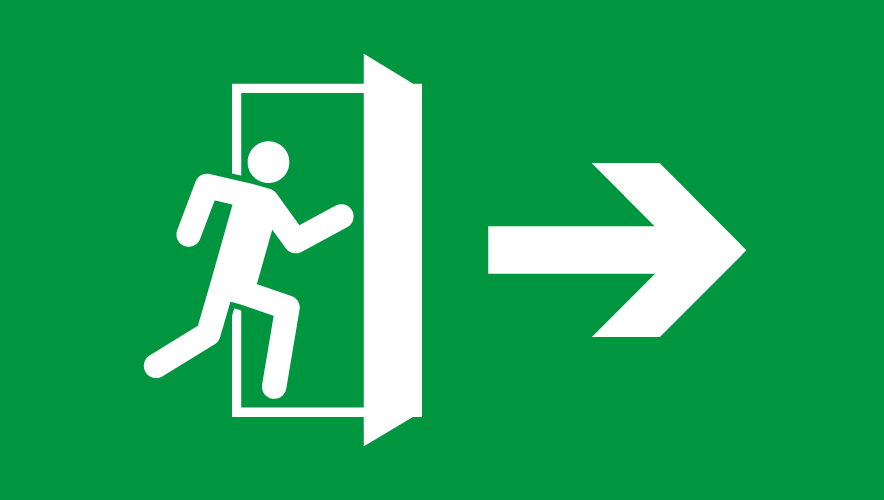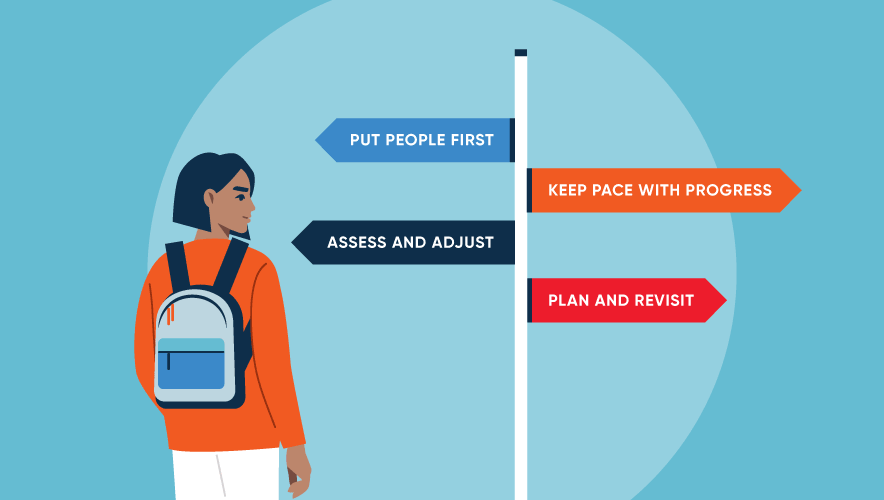Creating an Upstander Culture: New Toolkit Aims to Improve School Safety Reporting Programs
If you see something concerning, saying something can help prevent a disaster. That was one of the takeaways in a U.S. Secret Service analysis of plots against schools between 2006 and 2018.
“The key findings of the study are clear and consistent: Individuals contemplating violence often exhibit observable behaviors, and when community members report these behaviors, the next tragedy can be averted,” wrote U.S. Secret Service Director James M. Murray in the forward of the analysis.
Yet, it’s not always easy to say something when observing a concerning behavior or pattern of activity at school, explains Katherine Schweit, founder of Schweit Consulting LLC and cofounder of the Bureau Consortium. After the Sandy Hook shooting, Schweit—then an FBI special agent—was tapped to help redevelop the Bureau’s approach to active shooter incidents after Sandy Hook.
“Many times, people see something or hear something, but there are two big impediments to their success in helping to stop the killing,” Schweit says. “One, they don’t know who to report to. And the other, they don’t know what to report.”
To help address these issues and prevent school violence, the U.S. Secret Service National Threat Assessment Center (NTAC) and the U.S. Cybersecurity and Infrastructure Security Agency (CISA) released a toolkit Tuesday for kindergarten through 12th grade schools to help strengthening their safety reporting programs.
“Targeted school violence is preventable when communities facilitate bystander reporting and promote climates of safety and trust,” said NTAC Chief Dr. Lina Alathari in a press release. “Our research has shown that students are best positioned to identify and report concerning behaviors displayed by their classmates. Preventing school violence is everyone’s responsibility. The reporting programs described in this toolkit promote successful outcomes for all students while fostering a proactive approach to school safety.”
The toolkit includes guidance, self-assessment worksheets, reference resources, and checklists to help school officials assess where their reporting systems stand—if they have one—and areas for improvement.
“The toolkit provides a framework that can be utilized by schools to increase the likelihood of a potential threat of targeted violence being reported, so that it can be effectively assessed,” says Drew Necker, chair of the ASIS International School Safety and Security Community. “If a threat is present, appropriate actions can be taken to mitigate it.”
The toolkit emphasizes five main areas for schools to consider in their safety reporting procedures:
- Encourage bystanders to report concerns for the wellness and safety of themselves or others.
- Make reporting accessible and safe for the reporting community.
- Follow-up on reports and be transparent about the actions taken in response to reported concerns.
- Make reporting a part of daily school life.
- Create a positive climate where reporting is valued and respected.
Along with threats, the toolkit also encourages bystanders to report if a student needs resources or support—such as instances of bullying, drug use, self-harm, suicidal ideations, and depression. It also encourages creating a climate where adults at school are considered trusted individuals.
“When applicable, foster trusting relationships between student populations and school-based law enforcement or school resource officers (SROs),” the toolkit explained. “Strive for a climate where people of all backgrounds feel secure, important, and valued.”
Creating this climate is key to encouraging people to say something when they observe something unusual or concerning, Schweit says.
“We know from FBI behavioral experts that individuals in a school environment who commit targeted violence do so with the knowledge of the people around them,” she adds. “They might not know specifics, but they know pieces. If a school has an anonymous reporting system, a box where you can make a report, a trusted SRO or principal, and opportunities to interact with school counselors, coaches, librarians, lunch officials, all these people together can become the environment that gives students and other people working in the school confidence to report what they see.”
Guy Bliesner founded the Idaho Office of School Safety and Security and serves as the school safety and security analyst for the Idaho Office of the State Board of Education. Bliesner says he likes the emphasis the toolkit places on building an “upstander rather than a bystander culture” to encourage students to report when a classmate is acting unusual or hurting.
Bliesner says he also appreciates that the toolkit guidance is straightforward, encouraging officials to assess where their reporting systems—if they exist—stand and where the holes in the systems are before creating mechanisms to address them.
When it comes to creating a reporting system itself, the toolkit provides references to existing U.S. state reporting systems and private sector alternatives. It is not prescriptive, however, allowing officials to determine which reporting structure works best for their school community and resources.
In Idaho, for instance, the U.S. state has a curated tip reporting system that allows students to report issues anonymously. The reports are then sent to a 24/7 call center and triaged, such as forwarded to police dispatchers and principals if it’s a report about potential immediate harm.
Many schools, however, set up separate reporting systems for teachers and staff to internally report issues. One creative and low-cost solution Bliesner is familiar with used Google Forms. A staff member at a school created a Google Form named Behaviors of Concern to report “gray area” concerns not related to disciplinary actions or academic issues.
The form asked just five questions:
- What’s the time and date?
- Who are you?
- Who are you worried about and what did you see?
- What caused the concern?
- What else do you know?
The staff member then made a shortcut to the form on every school computer desktop in the building. After it was filled out and submitted, the form went to a counselor or school principal to take action—depending on the type of behavior described and the number of reports in a given time period about a particular student.
While this is one system for handling reports, Bleisner says the key is that whatever system is in place must be clearly delineated and there must be certainty that something is going to be done in response to that report.
“There needs to be that process of ‘Yes, we got your tip, and we’re engaged in addressing the need,’” Bliesner says. “They need to know that they didn’t just throw it into the air.”
Necker agrees that having multiple avenues of reporting and feedback on reports is essential to creating a culture of reporting.
“If a school can build a robust program that encourages students to report and an effective threat assessment and management process to evaluate those reports, it stands a significantly better chance of preventing acts of violence,” Neckar adds. “These processes serve as an integral piece of a school’s safety program, but to be most effective must be implemented in conjunction with other elements such as training, physical security, emergency response planning, and a school climate that supports its safety program.”












